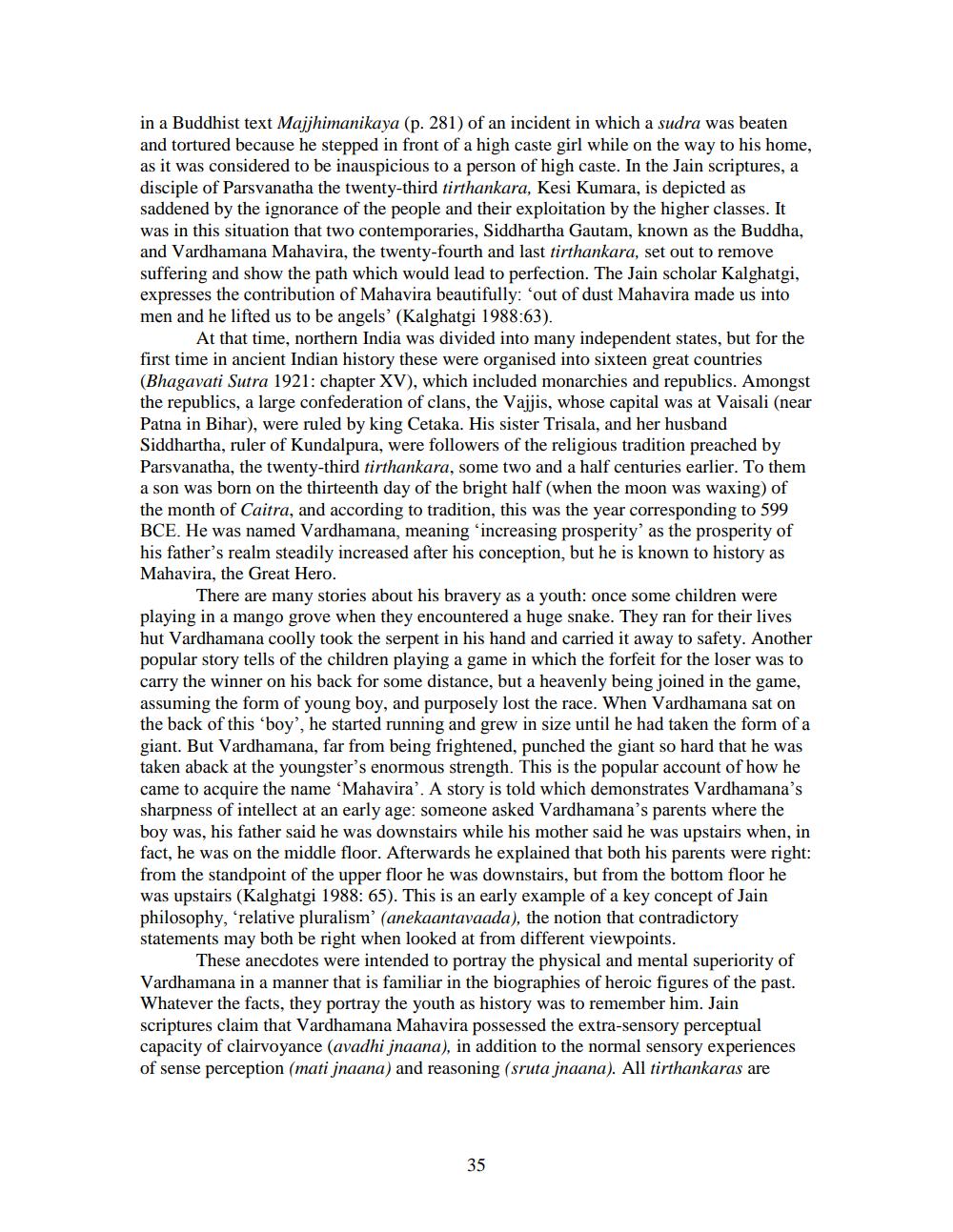________________
in a Buddhist text Majjhimanikaya (p. 281) of an incident in which a sudra was beaten and tortured because he stepped in front of a high caste girl while on the way to his home, as it was considered to be inauspicious to a person of high caste. In the Jain scriptures, a disciple of Parsvanatha the twenty-third tirthankara, Kesi Kumara, is depicted as saddened by the ignorance of the people and their exploitation by the higher classes. It was in this situation that two contemporaries, Siddhartha Gautam, known as the Buddha, and Vardhamana Mahavira, the twenty-fourth and last tirthankara, set out to remove suffering and show the path which would lead to perfection. The Jain scholar Kalghatgi, expresses the contribution of Mahavira beautifully: 'out of dust Mahavira made us into men and he lifted us to be angels' (Kalghatgi 1988:63).
At that time, northern India was divided into many independent states, but for the first time in ancient Indian history these were organised into sixteen great countries (Bhagavati Sutra 1921: chapter XV), which included monarchies and republics. Amongst the republics, a large confederation of clans, the Vajjis, whose capital was at Vaisali (near Patna in Bihar), were ruled by king Cetaka. His sister Trisala, and her husband Siddhartha, ruler of Kundalpura, were followers of the religious tradition preached by Parsvanatha, the twenty-third tirthankara, some two and a half centuries earlier. To them a son was born on the thirteenth day of the bright half (when the moon was waxing) of the month of Caitra, and according to tradition, this was the year corresponding to 599 BCE. He was named Vardhamana, meaning 'increasing prosperity' as the prosperity of his father's realm steadily increased after his conception, but he is known to history as Mahavira, the Great Hero.
There are many stories about his bravery as a youth: once some children were playing in a mango grove when they encountered a huge snake. They ran for their lives hut Vardhamana coolly took the serpent in his hand and carried it away to safety. Another popular story tells of the children playing a game in which the forfeit for the loser was to carry the winner on his back for some distance, but a heavenly being joined in the game, assuming the form of young boy, and purposely lost the race. When Vardhamana sat on the back of this 'boy', he started running and grew in size until he had taken the form of a giant. But Vardhamana, far from being frightened, punched the giant so hard that he was taken aback at the youngster's enormous strength. This is the popular account of how he came to acquire the name 'Mahavira'. A story is told which demonstrates Vardhamana's sharpness of intellect at an early age: someone asked Vardhamana's parents where the boy was, his father said he was downstairs while his mother said he was upstairs when, in fact, he was on the middle floor. Afterwards he explained that both his parents were right: from the standpoint of the upper floor he was downstairs, but from the bottom floor he was upstairs (Kalghatgi 1988: 65). This is an early example of a key concept of Jain philosophy, 'relative pluralism' (anekaantavaada), the notion that contradictory statements may both be right when looked at from different viewpoints.
These anecdotes were intended to portray the physical and mental superiority of Vardhamana in a manner that is familiar in the biographies of heroic figures of the past. Whatever the facts, they portray the youth as history was to remember him. Jain scriptures claim that Vardhamana Mahavira possessed the extra-sensory perceptual capacity of clairvoyance (avadhi jnaana), in addition to the normal sensory experiences of sense perception (mati jnaana) and reasoning (sruta jnaana). All tirthankaras are
35




